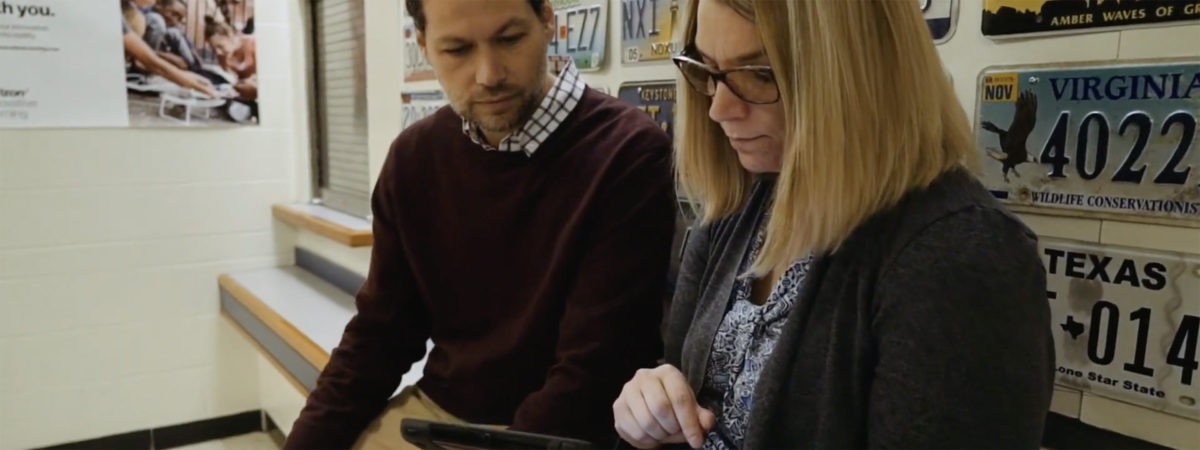
In our study of 108 schools across seven states, we found that when teachers chose to participate in coaching voluntarily, they were more likely to be invested in the change process. Indeed, teachers who were more willing to participate in coaching reported spending more time with their coach and receiving a higher degree of support. Moreover, our Year 2 DLP research findings show a strong positive correlation between teacher perception of coaching as voluntary and teacher improvement in areas like content-based instructional strategies, assessment, differentiation, and classroom management.
To better understand the “why” and “how” behind these quantitative findings, we conducted multiple visits to case study schools to interview coaches, principals, and teachers. Through these visits, we were able to compare three schools where coaching was entirely voluntary with three other schools where participation in coaching (at least initially) was assigned by administration. Insights from these schools provide coaches and school administrators with concrete strategies for facilitating voluntary participation in coaching in their settings.
In the three schools where teachers chose to participate in classroom coaching, principals and coaches saw the voluntary nature of the program as non-negotiable. “It’s not compliance-based, it’s real, and so teachers are more likely to engage,” one principal said. Teachers in these schools elected to participate because they saw the potential value of using technology in more powerful ways, were excited about the personalized nature of the program’s support, and had specific goals they wanted to achieve.
To encourage voluntary participation, coaches and principals collaboratively prepared a kick-off event at the beginning of the year to “hype up” teachers and introduce the alignment between coaching and instructional and curricular school goals, while also reassuring teachers that they would not be forced to participate. These kick-off sessions motivated some teachers to participate in the program. That said, teachers who volunteered for the first round of coaching tended to be known as early adopters of new practices on their campus or to have an existing relationship with the coach.
In turn, these early volunteers helped recruit other teachers by sharing with their colleagues that working with their coach reduced their job stress, renewed their love for teaching, and had a positive impact on student engagement and learning. As one teacher told us, “Happy customers are the best salespeople.” These endorsements influenced teachers who may have originally been hesitant to participate to seek out support from the coach. Coaches and principals also found ways to amplify the endorsements from previously coached teachers by celebrating their successes during faculty meetings and through social media. Said one coach: “The first group, I just took teachers who volunteered, and that’s really all it took. Because once that started to get out, it just spread.”
The three schools where principals initially assigned specific teachers to participate in coaching saw lower levels of teacher buy-in and struggled with teachers’ resistance to coaching. Some of the non-volunteer teachers were eventually dropped from the program due to their lack of participation.
Noticing that teachers who were selected to participate felt less invested in the collaboration, the principal and coach at two of these schools shifted their approach mid-year. Building momentum as they switched to a recruitment model was challenging. To address this challenge, one coach used the strategy of visiting grade-level and department meetings to share strategies and tools. In these smaller settings, the coach was able to build relationships by listening to individual teachers’ needs and perspectives and by emphasizing and sharing stories; teachers felt more comfortable asking questions about what participation in sustained coaching would look like. In this way, the coach was able to build traction and recruit volunteers.
A classroom coaching program is more likely to succeed when teacher participation is voluntary. To initially facilitate voluntary participation, a strong kick-off event at the start of the year, coupled with administrator support, builds initial teacher interest and buy-in. Over the course of the year, providing coached teachers with avenues for sharing their success stories with their colleagues, both formally in larger faculty meetings and informally through word-of-mouth and social media, is another powerful tool for continued recruitment. Finally, building rapport with teachers in smaller settings can help coaches make progress with initially reluctant teachers.
For more tips and best practices on building a successful coaching program, check out our new Instructional Coaching Playbook.

We want to hear from you!
Please take this 5-minute survey and help us serve you better.
